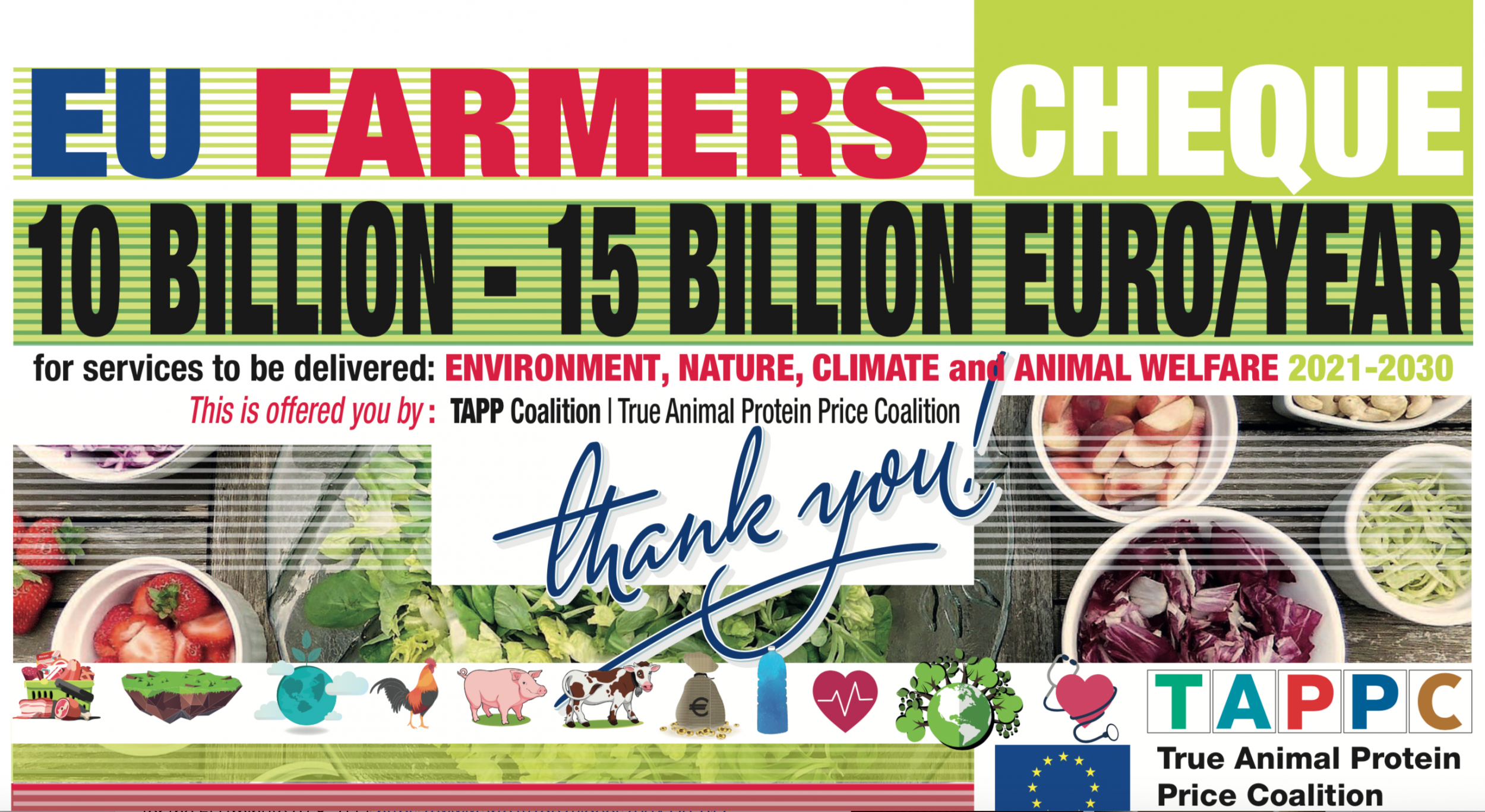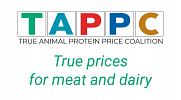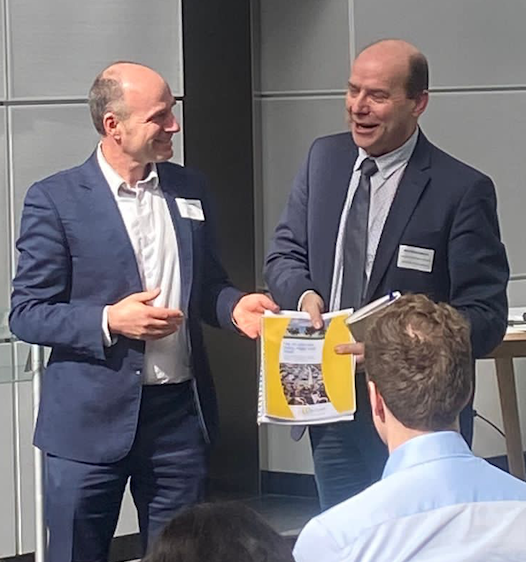EU 2040 agri climate goals: majority support for Agri-ETS
On 6th February 2024 EU Climate Commissioner Hoekstra presented recommendations for the 2040 EU climate goals for all sectors, including agriculture. But emission reduction goals for farmers and proposals to reduce meat consumption were removed from the final draft. In the Q&A section about the proposal, the EU Commission did not answer the question ‘What would a 90% emission reduction target mean for European citizens in terms of food’. Sentences about reducing meat consumption are replaced by a sentence about farmers and fishermen.[1]
A public consultation[2] by the EU Commission however showed that there are 3 times more proponents for a carbon price on agricultural emissions (54%), compared to opponents (16%). The options that food companies should pay a carbon price for agriculture emissions got most support: 6 times more proponents (40%) compared to opponents (6%). The option that farmers should pay for the emissions got least support. So the EU Commission has a mandate to act and include slaughterhouses and dairy factories in a new ETS system.
The TAPP Coalition, a European network of food companies and NGO’s, is disappointed about weakening EU climate goals for agriculture and meat consumption by the EU Commission, in response to farmer protests in Europe. Remmers, director of TAPP Coalition: “If the EU really wants to lead the world in climate policies, the EU Commission should stand firm on CO2-emission reduction in the agri-food sector”. It is a sector that generates 13-17 percent of EU GHG emissions. In the past decades the sector did not reduce GHG-emissions very much, unlike many other sectors. It’s the only European sector without CO2-pricing. Remmers: “Erasing climate goals for this sector is not helpful for farmers, the climate, public health and EU consumers, it’s a lose-lose situation. A fair income for farmers can be combined with climate goals, if consumers pay a little bit more for food by new CO2-taxes for retail companies or carbon pricing in an agri-ETS for food companies. Tax revenues can be used to support farmers, recude taxes for climate friendly food products and compensate low income groups. This is a win-win solution”.
The TAPP Coalition agrees that ambitious climate targets for the agri-food sector could harm low income groups if food prices would increase. For the Energy Sector the EU Commission started the Social Climate Fund and the Just Transition Fund, to support low income households and companies to deal with higher energy prices. In a similar way the EU can do this with food prices. Remmers: “Thirty to fifty percent of lowest income groups could be supported by a new EU Social Climate Food Fund: monthly credit cards of for instance 20 euro to buy healthy and organic food with low climate footprints for free”.
A previous draft of the EU target, seen by Euractiv[3], said agriculture would need to cut non-CO2 emissions 30 percent by 2040 from 2015 levels, to comply with the overall climate goal. That was removed from the final draft, just like wording on meat consumption reduction. In the previous draft it was mentioned that ‘carbon pricing in agriculture will be key to achieving the targets, referring to it as a way to “create business opportunities for a more sustainable agrifood value chain”. But in the final text no reference to carbon pricing was made.
The TAPP Coalition is happy to see the final text does refer to a form of carbon pricing
The EU Commission referred to carbon pricing, calling it now a ‘market-based mechanism’: “it is crucial to create further business opportunities for a sustainable agrifood value chain and leverage private funds in synergy with public funding. This could be done with new market-based mechanisms to boost sustainable food, as this could result both in a better food price to reflect sustainability as well as a fair reward for farmers and new source of funding for investments[4].
European Commissioner Wopke Hoekstra told the European Parliament, as he unveiled the proposal on Tuesday 6th February: “We need to make sure we have a balanced approach. The vast majority of our citizens sees the effects of climate change, does want protection, but is also worried about what that implies for their livelihood.”
TAPP Coalition proposed 10-15 billion euro per year extra for sustainable farmers in the EU in a report presented in the EU Parliament in 2020. This budget could be derived from EU wide meat taxes. In this way farm income could be supported, when higher environmental standards lead to higher costs at farm level. But an Agri-ETS could also generate billions of euro to support farmers to become more eco-friendly. If Agri-ETS permits are auctioned at the start and in later years, eg for slaugherhouses and dairy companies, this generates huge amounts of revenues. TAPP Coalition handed over another report to a representative of the EU Commission in 2023, showing the EU member states can reduce healthy food prices by tax revenues of taxes on meat and dairy.
Attachments:
Impact Assessment refers to less meat consumption
Public Consultation: CO2 pricing in agriculture widely supported
In the EU communication documents released 6th February, the Commission also presented impact Assessment studies on the 90% CO2-emission reduction target for 2040. Here, many references are made to the need for meat consumption reduction and pricing mechanisms:
“With regard to demand-sided mitigation potentials associated with individual choices, behaviour and lifestyle changes, the IPCC has identified nutrition as the area with the biggest potential to reduce emissions. Also, throughout the EU, food has both emerged as the consumption area of individuals with the highest environmental and climate impact. When looking more closely on food consumption habits of EU citizens, animal-based products (i.e., meat, dairy products, and eggs) stick out since they make up only about one quarter of the total amount of food consumed while contributing to more than 60% of the climate change impacts from food. In the last five years before 2023, per capita consumption of meat declined by nearly 2% and consumption of fresh dairy products by 6%, a trend that is generally expected to continue in the future”.
In the Impact study, one of the scenario’s is the LIFE scenario, “that aims at reaching net GHG emission reductions of at least 90% in 2040 compared to 1990 and climate neutrality in 2050. Activity assumptions LIFE considers a more sustainable lifestyle guided by consumer climate-friendy choices, including dietary change. This shift is directed towards a more sustainable, climate-friendly and healthy diet, as it is proposed by the EAT-Lancet Commission. On average, the dietary pattern of EU citizens moves gradually towards the optimal sustainable and healthy diet from the EAT-Lancet Commission by 25% in 2040.
LIFE incorporates significant health benefits for its citizens. For Europe, research finds a greater consumption of red meat, eggs and dairy products than recommended consumption levels of healthy reference diets. Studies indicate that reducing meat consumption, while maintaining a broad and varied diet is beneficial for human health as it reduces the risk of cardiovascular diseases, cancer, diabetes and obesity. This has also significant economic benefits on health costs. An increase in plant-based diets in the EU is improving human health both directly through more healthy diets and indirectly through cleaner air, which creates economic benefits from improved human health that would compensate some part of the economic losses in agricultural sector. Building on a shift to healthier diets and more sustainable practices, LIFE leads to complementary changes in the agricultural land area, where allowing part of the land to be freed up from livestock, fodder activities and intensively grazed land and converted into extensive grassland, high diversity landscape features with – in comparison to scenario S2 and S3 – more natural vegetation (+6.8 Mha), forest land (+4 Mha) and rewetted organic soils (+0.3 Mha). This change in land use is accompanied by a reduction in nutrient surplus and use of pesticides, and an increase of organic farming in line with the Farm to Fork Strategy. The land use change has a positive effect on LULUCF net removals, which can be expected to create additional income opportunities for farmers through carbon farming, as well as significant co-benefits for biodiversity. Shift to flexitarian diets could reduce ammonia emissions by 33% in the EU. Himics et al. ‘Co-benefits of a flexitarian diet for air quality and human health in Europe’.
Public consultation [5] shows a majority support for carbon pricing agri-food systems
The Commission’s proposal follows a public consultation which took place from 31 March to 23 June 2023, in which we invited citizens and stakeholders to share their views on the EU’s climate target for 2040. The public consultation among 580 experts (organisations and individuals) showed that there are three times more proponents for a carbon price on agricultural emissions (54%), compared to opponents (16%). The options that food companies should pay a carbon price for agriculture emissions got most support: 6 times more proponents (40%) compared to opponents (6%). The option that farmers should pay for the emissions got least support. So the EU commission has a mandate to act and include slaughterhouses and dairy factories in a new ETS system. See figure 1 and 2.
Figure 1: which actor should pay a carbon price for agricultural emissions?
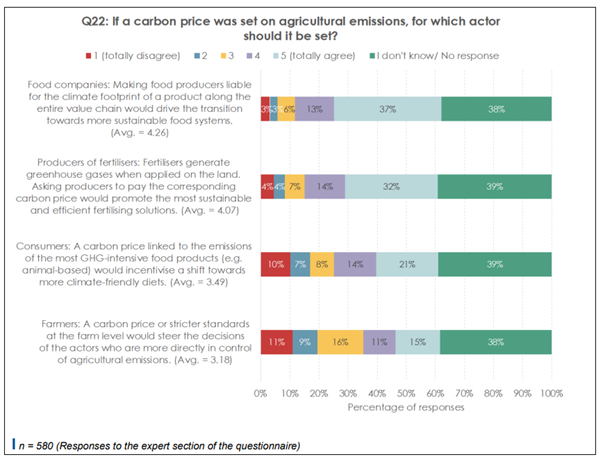
Figure 2: the role of carbon pricing and other options to reduce agricultural emissions.
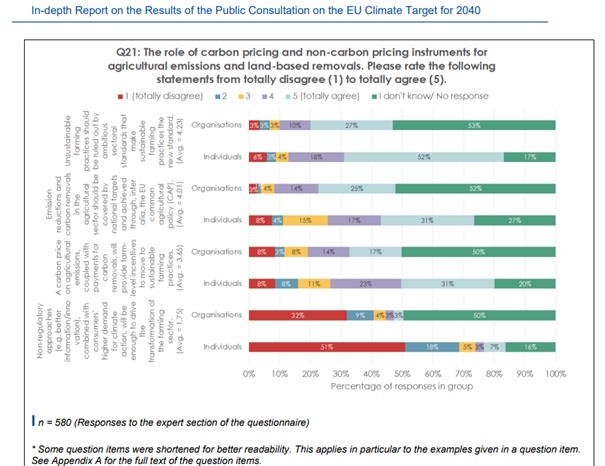
[1] Communication on Europe's 2040 climate target (europa.eu)
[2] https://ec.europa.eu/info/law/better-regulation/have-your-say/initiatives/13793-EU-climate-target-for-2040/public-consultation_en
[3] Agriculture ‘core area’ for EU’s 2040 climate targets – Commission report – Euractiv
[4] 2ccd7710-5fc3-420f-aeb8-9a3af271f970_en (europa.eu)
